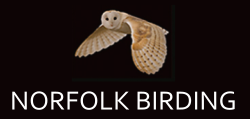October 25-27th Norfolk Three Day tour
Day one – Hunstanton cliffs, Holme Dunes & Titchwell RSPB
The day and the tour started bright and early with an amazing 3 hours watching visible migration at Hunstanton Cliffs, with an amazing passage and continuous flow of birds passing South, that included 54,800 Starling, 6013 Chaffinch, 88 Brambling, 162 Siskin, 387 Lapwing and also a Marsh Harrier watched flying in off the sea, along with the my first Fieldfare of the autumn.
| Species | Count | Location |
| Greylag Goose | 5 | Hunstanton Cliffs |
| Pink-footed Goose | 7 | Hunstanton Cliffs |
| Common Woodpigeon | 202 | Hunstanton Cliffs |
| Northern Lapwing | 387 | Hunstanton Cliffs |
| Little Egret | 1 | Hunstanton Cliffs |
| Marsh Harrier | 1 | Hunstanton Cliffs |
| Eurasian Sparrowhawk | 1 | Hunstanton Cliffs |
| Eurasian Jay | 5 | Hunstanton Cliffs |
| Common Magpie | 1 | Hunstanton Cliffs |
| Eurasian Jackdaw | 79 | Hunstanton Cliffs |
| Rook | 14 | Hunstanton Cliffs |
| Great Tit | 1 | Hunstanton Cliffs |
| Eurasian Skylark | 29 | Hunstanton Cliffs |
| Common Starling | 54800 | Hunstanton Cliffs |
| Mistle Thrush | 1 | Hunstanton Cliffs |
| Song Thrush | 3 | Hunstanton Cliffs |
| Redwing | 111 | Hunstanton Cliffs |
| Eurasian Blackbird | 8 | Hunstanton Cliffs |
| Fieldfare | 18 | Hunstanton Cliffs |
| Grey Wagtail | 3 | Hunstanton Cliffs |
| Pied Wagtail/White Wagtail | 8 | Hunstanton Cliffs |
| Meadow Pipit | 13 | Hunstanton Cliffs |
| Rock Pipit (Scandinavian) | 8 | Hunstanton Cliffs |
| Common Chaffinch | 6013 | Hunstanton Cliffs |
| Brambling | 88 | Hunstanton Cliffs |
| European Greenfinch | 14 | Hunstanton Cliffs |
| Common Linnet | 11 | Hunstanton Cliffs |
| European Goldfinch | 9 | Hunstanton Cliffs |
| Eurasian Siskin | 162 | Hunstanton Cliffs |
| Yellowhammer | 5 | Hunstanton Cliffs |
| Common Reed Bunting | 2 | Hunstanton Cliffs |
We then headed to Holme dunes where there was a notable continuation of overhead migration particularly Starling & Lapwing with many flocks out over the sea. As we walked out we were distracted by the superb sight and sound of c3000 Pink-footed Geese flying in and dropping on to the grazing marsh. An examination of the sea produced quite a few Red-throated Diver, Great Crested grebe, Gannets and Common Scoter. A really nice surprise was a close fly-by female Scaup, soon followed by 4 female Eider and 2 Red-breasted Merganser.
After a great morning’s birding we headed to Titchwell where we had lunch and then headed out to the freshmarsh. We were greeted by a beautiful flock of c1500 Golden Plover, just beyond these were a nice group of Ruff and Dunlin and I was pleased to see that the Grey Phalarope was still present, as active as ever spinning and taking invertebrates from the water’s surface.
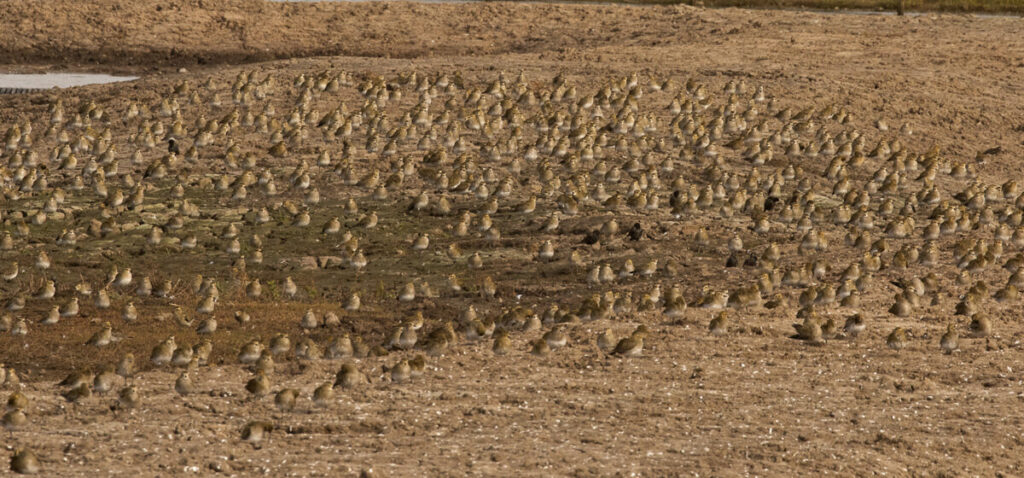
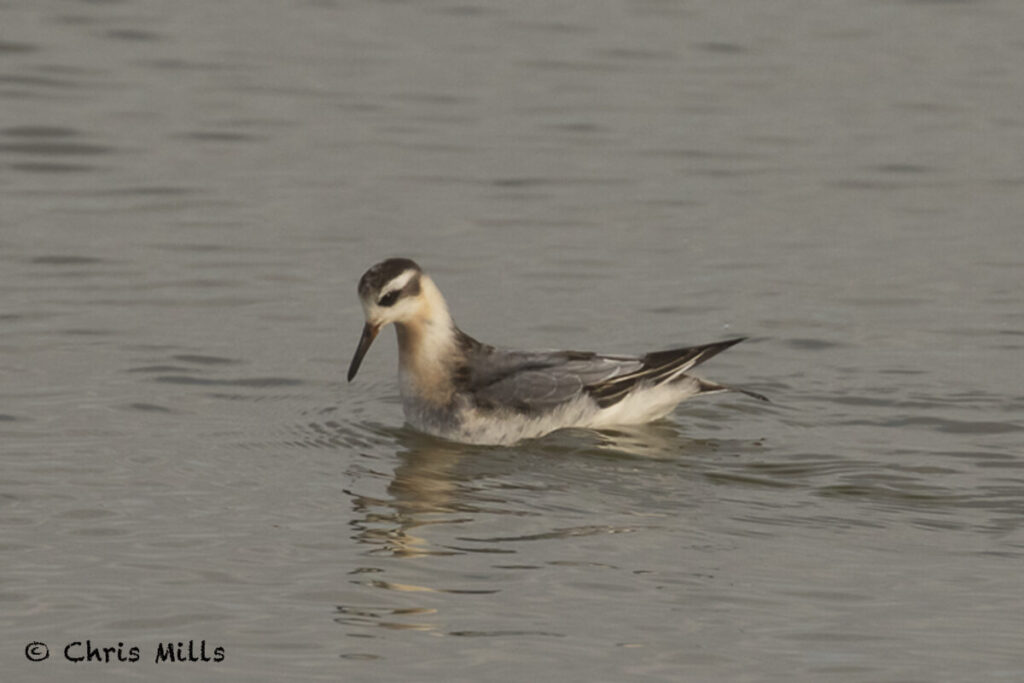
The freshmarsh hosted a good selection waders, Dunlin, Ruff, Black-tailed godwit, Snipe, Ringed Plover, Avocet and Lapwing the lagoons were brimming with Wigeon, Teal and Shoveler. Also 2-3 Marsh harriers occasionally giving fine views above the reedbed.
We then headed to the beach and there was a good collection of shorebirds with 300 Red Knot, 200 Oystercatcher, Grey Plover, Bar-tailed Godwit, Sanderling, Dunlin & Redshank, with group of Dark-bellied Brent Geese On the sea there were 5 Red-throated Divers, including one very close to the shore, also 22 Great Crested Grebe small groups of Guillemot and Razorbills, sadly like the one below several unwell birds were noted.
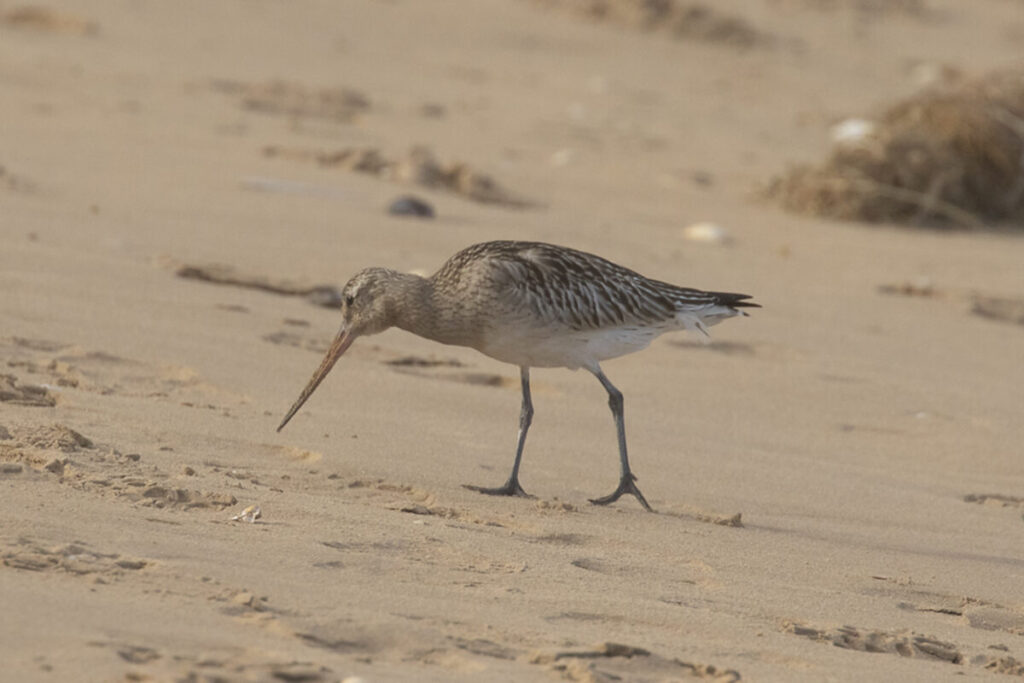
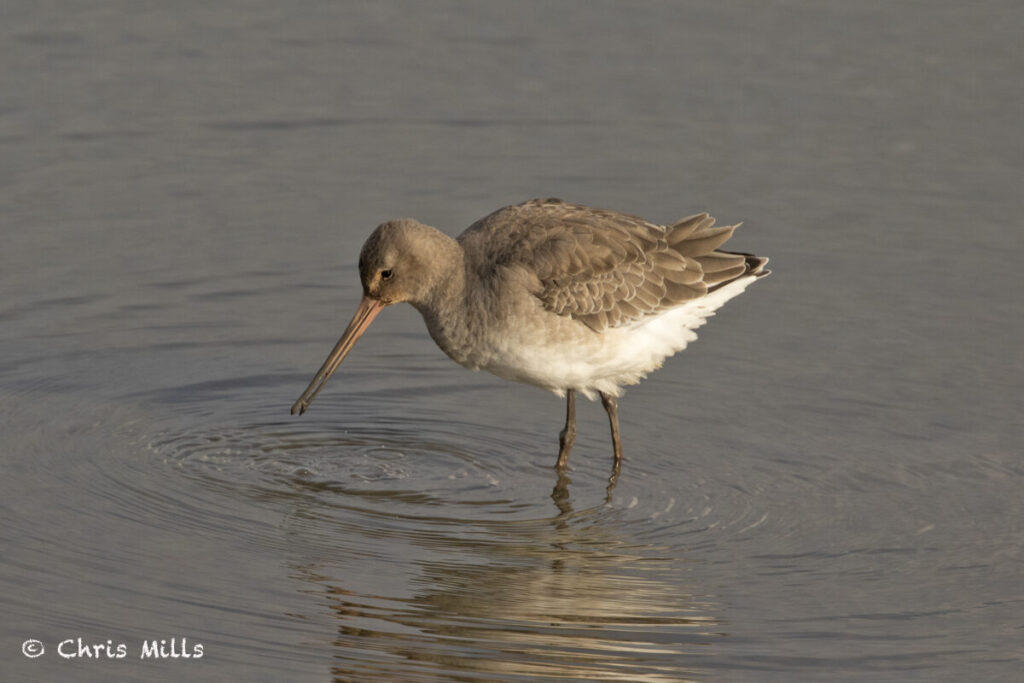
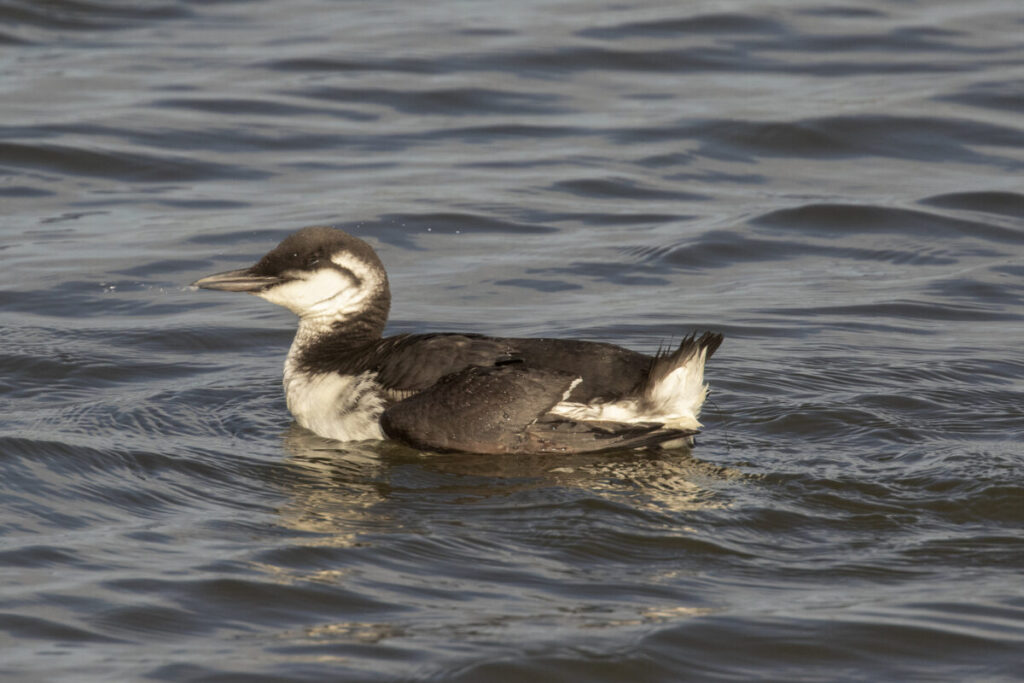
A super first day with 97 species recorded.
Day Two – Potter Heigham Marshes, Winterton & Waxham
We headed out East today to The Broads and started the day at Potter Heigham marshes. A great 2-3 hours here with 2 Spotted Redshank calling almost immediately as we reached the river bank. These settled and eventually we had good scope views, there was parties of Black-tailed Godwit, a nice group of very well camouflaged Snipe in the reeds, plus several Ruff.
More scanning and we had an adult Little Stint in winter plumage, and shortly after we were watching a second and more familiar juvenile Little Stint. Several Marsh Harriers were hunting and ensured that the vast flocks of Teal, Wigeon, Shoveler & Lapwing were regularly startled and sent into the air.
As we stood watching the wetland waders and wildfowl, the familiar ‘pinging’ call of Bearded Tits could be heard and after a patient wait of a few minutes, they obliged, in fact they gave stunning views with 6-7 Bearded Tits performing beautifully sitting atop the nearby reeds, before heading off high, “pinging’ again as they flew off.
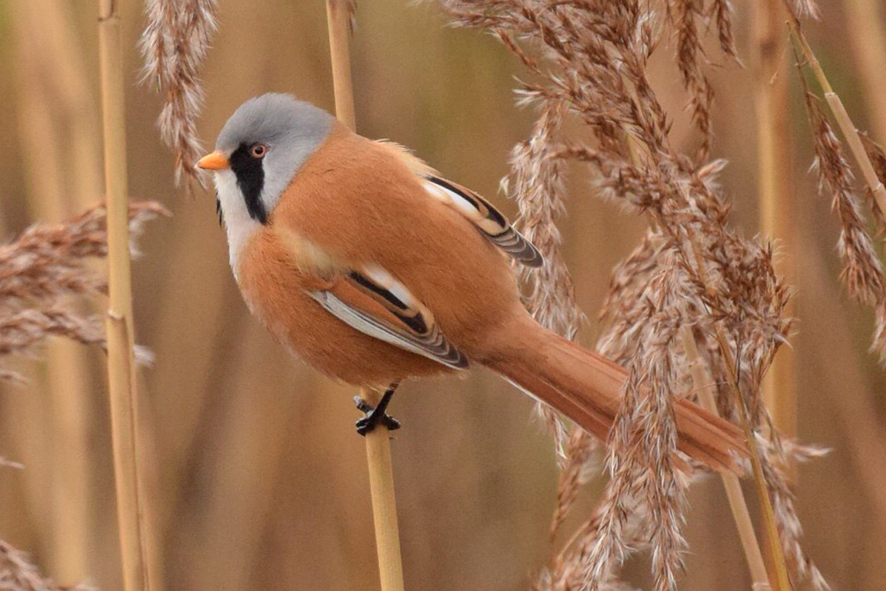
We started walking back and encountered another flock of Beardies and they gave almost a repeat performance! As we neared the end of the walk, I suddenly noticed two very large birds coming towards us, yes they could only be Common Cranes and we had good views as they circled and landed in fields just beyond the reeds, of course as is often the case with these large but slightly elusive birds, they managed to remain just out of view. Just as we were leaving 3 more Cranes arrived and we just managed to get everyone out of the minibus to see them as they flew overhead.
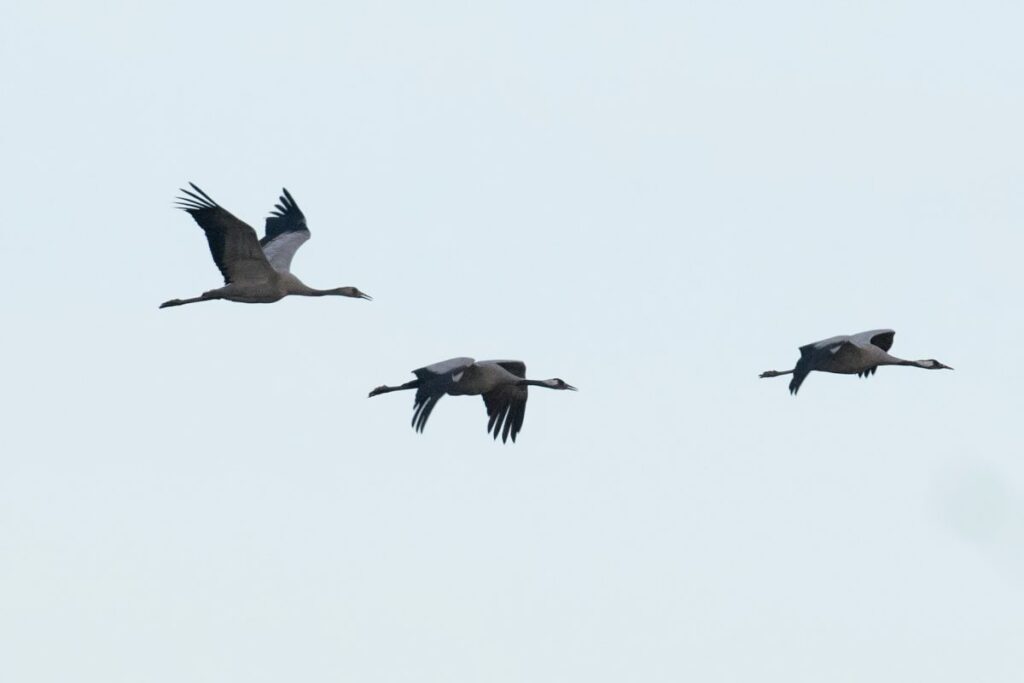
We next headed to Winterton, and once parked in the car park overlooking the sea, we soon located the ‘Scoter’ flock offshore. After carefully looking through it was possible to pick out the female Velvet Scoter and eventually it was isolated at the end of the flock and everyone managed to pick it out. We lunched late at Horsey Mill, and nearby we connected with 3 Cranes, this time on the ground and got nice scope views.
We headed off next to Waxham and took a steady walk to where a Great Grey Shrike had been seen earlier in the day, though news had been negative since, a chance conversation with a local birder suggested otherwise! It was q quite a walk through the dunes and as we neared the Shrikes last known area, I decided the best thing to do would be to get up on the highest point of the dunes.
Incredibly and maybe with a slice of luck, my first scan produced the bird! A super Great Grey Shrike sat right atop the distant bushes, though it was very mobile and it took several attempts to get all the group on to it, but fortunately the last lady, Jane just got her scope on to it before, it was harassed by 2 Magpies and it flew a long distance out of view!
Another lovely day was rounded off with a smashing group meal at the local bar!
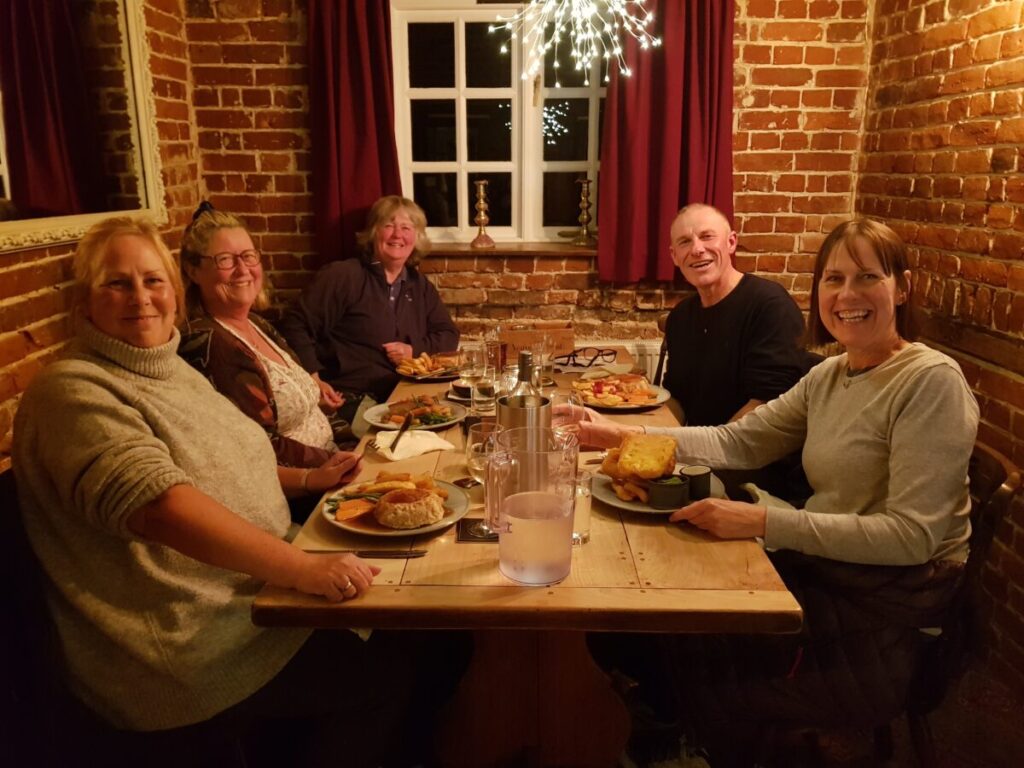
Day Three – Cley NWT, Stiffkey Greens, Holkham NNR & shore
We started the day with a seawatch off Cley Coastguards, there was again several Red-throated Divers close inshore, plus a few Common Scoter passing, though it was fairly quiet I did manage to locate a few distant Little Gulls offshore. Pink-footed Geese and Brents passed by along the shoreline and we also scanned the Dark-bellied Brents and also took time to show some of the juveniles in the flock, with their distinctive white fringed coverts.
We then walked down the East Bank and Arnold’s marsh held a nice bunch of waders with c40 Dunlin, 3 Grey Plover, 200 Golden Plover and small number so of Ringed Plover, Curlew, Redshank, Turnstone & Black-tailed Godwit. A walk east along the shingle bank failed to provide us with one of our main targets, newly arrived Snow Buntings! However as we walked back to the end of the East Bank, a small group of 4-5 other birders were standing quietly almost looking at their feet….a beautiful close group of very obliging Snow Buntings, though they were close they brilliantly camouflaged and each time I counted I added an extra one, until we had 10 Snow Buntings!
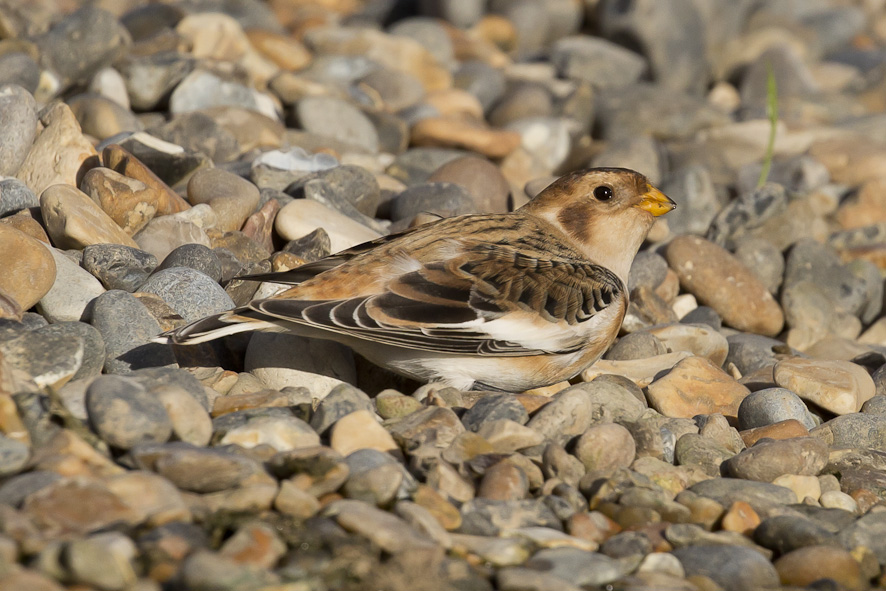
We headed to Stiffkey Greens where we had lunch and scanned for raptors, several Marsh harriers were out hunting, plus a Red Kite. No Hen Harriers appeared, but a Merlin whizzed out to our left and I managed to get a couple of the group on to it, before it disappeared as fast as it had appeared!
We then headed to a vantage point looking over Holkham grazing marshes and soon picked out our quarry a Great White Egret, though we need not have worried as 4 Great White Egret were visible when we arrived in the car parking area!
We next headed out on to the dunes and shore, there was no sign of the 2 Shorelark seen earlier, though a nice flock of c200 Linnet and plentiful Rock & Meadow Pipit were in the wet saltmarsh. Out on the sea there were several flocks of Common Scoter and eventually after scanning through them I managed to pick out 2 Velvet Scoter. More distantly but banking up and down was a surprise Manx Shearwater!
An excellent 3 days with 116 species recorded.
